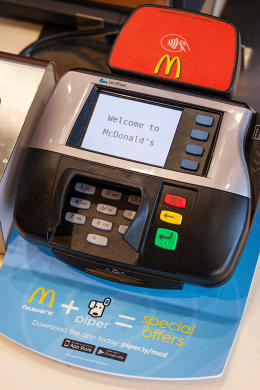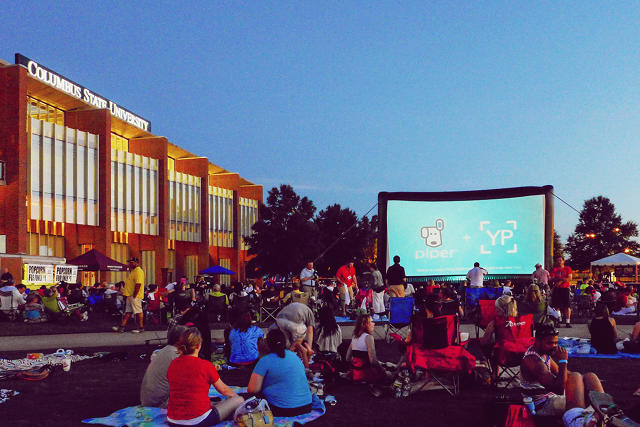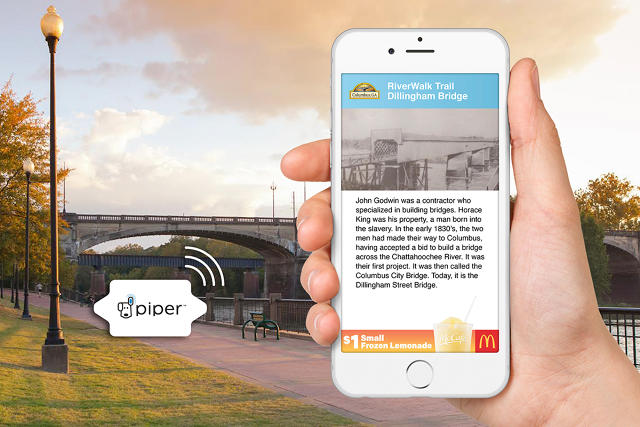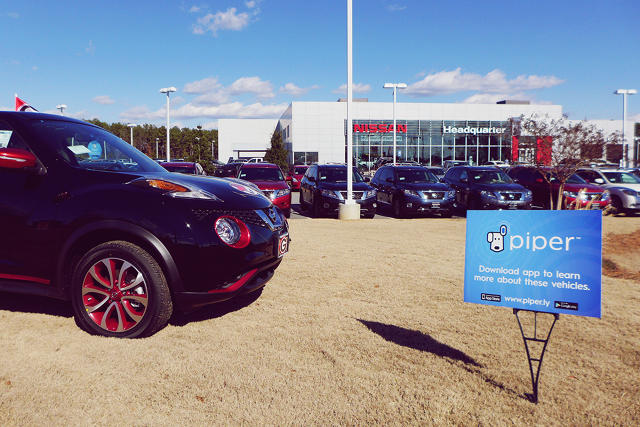App-development firm Piper’s products are pointless without a critical mass of users. So it picked a small city where it could make one.
After Apple introduced iBeacon in 2013, it was easy to imagine how the platform, which allowed anyone to use low-power Bluetooth to communicate with nearby phones, could tie digital interactions to the physical world. We would buy concert tickets after receiving a message from a beacon placed near a concert poster, read about art in messages that popped onto our phones as we passed murals, and receive personalized maps to find items on our shopping lists at Walmart. “It sounds absurd, but it’s true: Here we are in 2013, and one of the most exciting things going on in consumer technology is Bluetooth,” wrote Wired soon after the launch.
Apple was neither the first nor the last to introduce beacons. But though the technology remains promising, beacons haven’t exactly delivered on their promise. The NFL and MLB have installed them in stadiums; Macy’s has installed 4,000 of them in its stores; and Marriott has tested beacons with its loyalty program. But there’s an obstacle that each new adopter of beacons needs to overcome before these efforts translate to consumers: They need to get you to download an app that works with their beacons. And who wants to download a separate app for every store they enter or event they attend?

The solution seems pretty obvious: Make one app that works with everybody’s beacon. And Robert Hanczor, an entrepreneur in San Diego who runs an app development firm called Piper, decided to shift his team’s efforts toward making it. “Rather than expecting a consumer to download every individual app for every place they encounter,” he says, “[we wanted to] give them one application that gives them proximity messages wherever they go. We really evolved with a mission of becoming the browser of beacons.”
Which brings us to a new problem.
Like many technology products, a “browser of beacons” is only useful once it has a critical mass of users. On the business side, it’s not worth installing beacons if there aren’t people passing by who have installed the app. On the user side, there’s no point installing an app for picking up beacon signals if there’s only a handful of businesses that are beaming them out.
Piper didn’t have a marketing budget that could rapidly onboard users with a density that would make the product interesting to use, but it had another idea for demonstrating the potential of the idea. Instead of launching in a large market like New York or San Francisco, it would find a small city where it could relatively easily deploy a critical mass of beacons. Then it would grow from there.

San Diego, where the company was based, was too big. “It just makes more sense to try this in a location that is really self-contained,” Hanczor says. He already had a working relationship with a marketer named Wesley Ker-Fox who worked in one city on his list, Columbus, Georgia. (Later, Ker-Fox became his cofounder.)
And so Columbus became the only place in America where the Piper app—created by a startup team of about 15 people based in San Diego—is everywhere.
At 22 McDonald’s restaurants in the area, signs encourage customers to download Piper for a discount on a Big Mac. When you enter the store, Piper will send coupons to your phone, and after you leave, it will send a link to a customer satisfaction survey. It will also send a message to ask you if you want to work at McDonald’s, in which case a recruiter will call you while you’re still in the store. So far, it’s hired about 100 people this way.
In Columbus’s 15-mile-long RiverWalk park, 12 beacons point out places of interest, like an iconic fountain, and give passerby more information about them.
Columbus State University uses Piper beacons in a self-guided tour of its campus; to advertise a new Einstein Bros. Bagels on campus; and to remind students about upcoming sporting events.
Local businesses have also embraced the app. A local real estate agent uses it to give potential clients more information about the houses they pass; the Nissan dealership uses it to distribute coupons for an oil change; and a DoubleTree installed them in its hotel to direct people to the Houlihan’s down the hall.

In total, there are about 1,250 Piper beacons in Columbus, with businesses typically paying a monthly subscription fee for the service. Piper estimates that between 30,000 and 40,000 people in the city have downloaded the app. The metro area population is around 300,000.
“There are signs and billboards all over the place,” says Jason McKenzie, the owner of a local bike shop called Ride On Bikes who uses Piper to advertise a new smoothie bar inside his store. If you live in Columbus, “you already know what the logo looks like, at least,” he says.
The beauty of blanketing Columbus with Piper is that each location on the platform takes on some of the burden for marketing it. Someone who downloads Piper because she wants to take a tour of Columbus State University will also get messages from the Nissan dealership when she passes it the next day. This has potential to be slightly annoying to a consumer (you can block any of the beacons if it does), but it’s great for locations that are too small to have an app of their own, or for which an app doesn’t really make much sense.

Other platforms with bigger user bases than Piper’s are also aiming to unite many different locations’ beacons under one app. Shopkick, for instance, is a beacon-powered shopping companion platform that counts retailers like Target and Macy’s among its partners. Last month, Facebook announced a feature called Place Tips that uses beacons to allow businesses to send information to users when they’re nearby.
Piper’s strategy relies on encompassing the widest number of use cases. And as it deployed in Columbus, it found many more. Reynolds Bickerstaff, a partner at Waddell Realty, a real estate company that uses the app, says he wants to use it to tell home owners when real estate agents have left their homes after a showing so they can return. John Lester, the assistant vice president for university relations at Columbus State University, says the school has plans to use Piper as a safety button that students could push to show where they are located when they need help, not unlike the physical panic buttons installed on many campuses. Piper has started to expand to locations in Chicago, Los Angeles, and San Diego. It recently installed beacons in 330 Atlanta McDonald’s. But because there’s a density of beacons in Columbus, Piper can easily test these types of new implementations there. “Bluetooth technology is still relatively new,” Hanczor says. “Understanding how it works in lots of locations where you have lots of different devices, and learning how we have to smooth it out so that it’s not overwhelming for the consumer, has really been the biggest blessing for us.”
Fast Company , Read Full Story
(128)